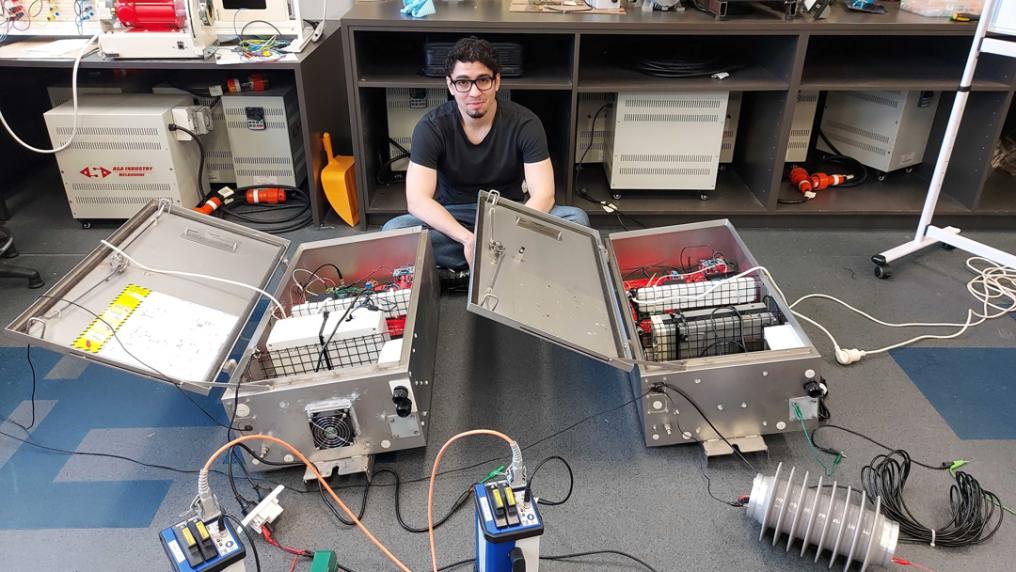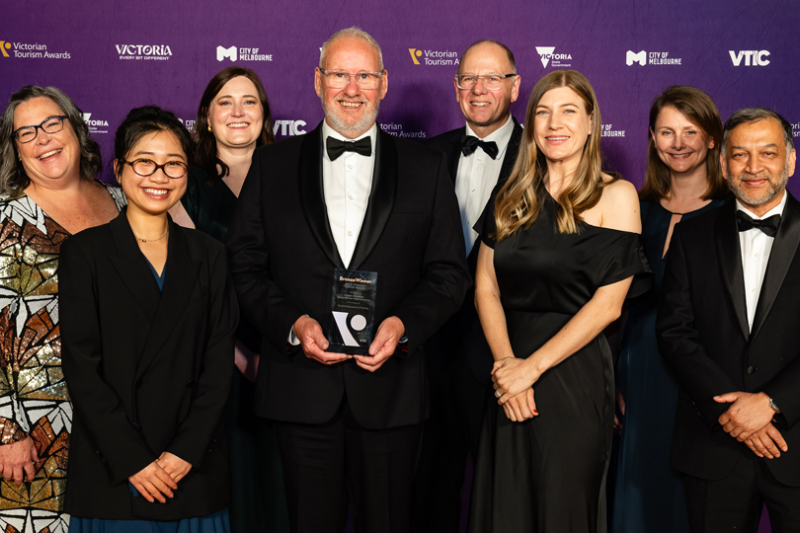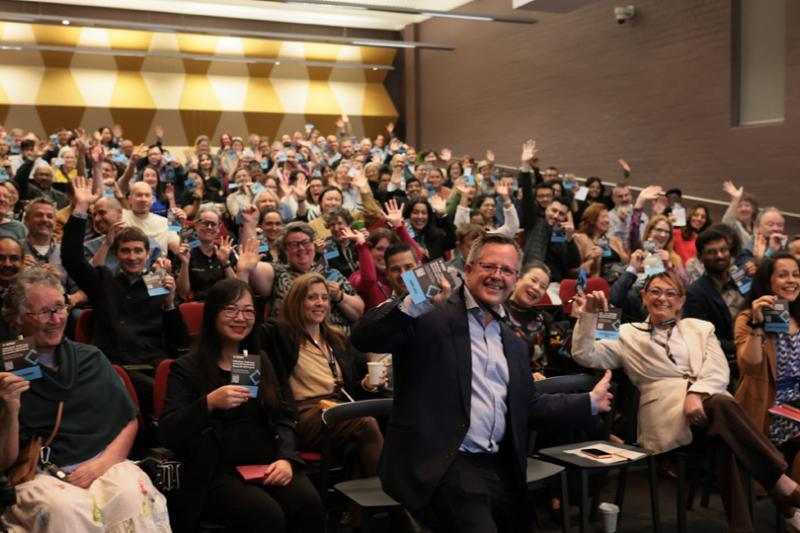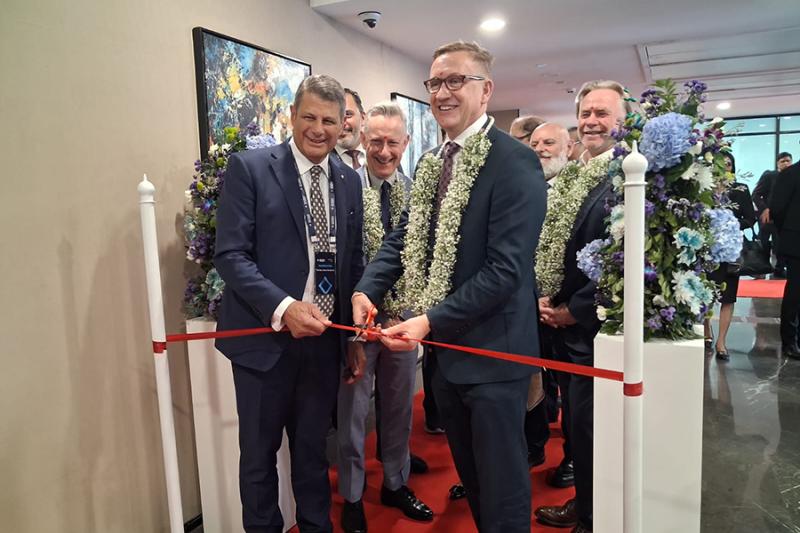Meet the researcher changing the game in bushfire prevention

Driven by his passion for developing new technologies with real world impact, VU researcher Dr Douglas Gomes believes the devices he’s developed to detect and locate powerline breakages can save lives and communities from devasting bushfires.
Growing up surrounded by the Cerrado and Pantanal biomes in the suburbs of Mato Grosso state in Brazil, Dr Gomes has early memories of bushfires.
“Wildfires have always been present in Brazil, but they are burning nearly twice as much tree cover today compared to 20 years ago. We need to address the risks as climate change conditions are expected to deteriorate further – the same is true for Australia,” he said.
While coming to Australia to study powerline-ignited bushfires and understand the need for better technologies, he was motivated to make it his career. After finishing his Masters in 2016 at the University of Sao Paulo (USP) in Brazil, Dr Gomes got a scholarship to study at Victoria University in Melbourne. It’s here he got involved in the early stages of what would become the development of devices to detect and locate broken powerline conductors.
This research follows the recommendations from the 2009 Victorian Bushfires Royal Commission after the devastating fires on Black Saturday. In one of Australia’s worst-ever disasters, 173 people died, more than a million wild and domesticated animals were lost and 450,000 hectares of land were burned.
Some of the most devastating fires from that event were ignited by powerlines. Dr Gomes and the team are passionate about the possibilities.
“This is still just the start for us. We are confident that we can use this technology to address other security and reliability problems beyond broken conductors that can heavily mitigate fire-ignition risks from powerlines.”
The development of the magic box
In 2018, Dr Gomes, Associate Professor Cagil Ozansoy and the team created their first prototype. A device that, once installed in a rural power distribution system, could remotely detect a powerline breakage and remove the power from the line before it can start a fire. A world-first trial in regional networks took place to attest the technology feasibility.
“Trialling the technology showed that we can detect a broken conductor and act on it before it touches the ground. Now we want to use this technology it to increase the reliability and service time to regional customers, which can be much vulnerable to power outages.”
The device targets networks of a particular configuration called Single-Wire Earth Return (SWER). They make up around 200,000 km of power lines in Australia.
By properly detecting and estimating the location of the broken conductor, crews can be immediately sent to fix it to a more precise location. Otherwise, the crew needs to visually inspect the line until they find the broken conductor, which can greatly delay the restoration of service to regional customers.
Protecting rural communities from fire
SWER systems have particular characteristics that make them very cost-effective for rural electrification.
With additional grant funding and industry partnerships, the device has now been rolled out across five networks in Victoria. Early testing is already showing the feasibility of the technology through staged broken conductor tests.
The group is now studying the possibility of generalising the technology to other systems rather than SWER and using it to detect other types of faults, such as tree-touching conductors. This would allow for a greater awareness of the system, increase system security, and improve the powerline maintenance team's efficiency in addressing potential fire-igniting risks.
The team is also looking at SWER networks in other countries where these boxes could be installed such as New Zealand and Dr Gomes’ home country of Brazil.
“There are international benefits from the use of this technology. I’d love to see it help protect my hometown and all homes and communities from fire devastation.”
Contact us
Dr Douglas Gomes
Industry Research Fellow, Institute for Sustainable Industries & Liveable Cities
[email protected]


